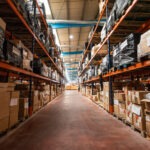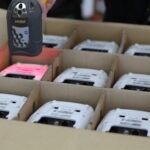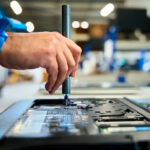IT asset buy-back: don’t let your unused equipment go to waste, give it a second lease of life!
Your company’s new fleet of barcode scanners, receipt printers or computers has just been deployed and it’s your role to decide what to do with the old, unused equipment (scrapping, storage, recycling, recovery, donation, etc.).
The more equipment and models you have, the more complex the choice becomes. While the easy thing to do would be to send it all for recycling, or to forget about it in a corner, there are much more economical, ecological and practical solutions!
Reuse vs. recycling: stop confusing the two!
Good news! The recycling habit is well established in European companies.
But the term “recycled equipment” is still too often misused. There’s still a long way to go to put an end to the confusion between recycling and reuse within companies.
Unused or broken equipment is not rubbish! It can be refurbished to give it a second life.
Reuse, or refurbishing, allows non-waste goods to be used again for the same original purpose.
Recycling should be the last resort in the life of IT equipment. The highly polluting composition of WEEE makes it difficult to recycle, and with each round of recycling the materials lose quality and end up becoming non-recyclable.
The re-use of second-hand equipment or spare parts should therefore be given priority over recycling.
Why should you value your IT assets and have them bought back ?
- Give your equipment a second life through re-use
- Regain some budget (your equipment still has value)
- Be GDPR-compliant by erasing certified data, which is mandatory for all takeovers
- Optimise your storage costs
- Benefit from full traceability of the processing of your equipment
- Reduce your carbon footprint by avoiding the manufacture of new equipment
A word from Christophe Guillarme, Chief Executive Officer of Codeo
“Equipment buy-back helps to secure data, comply with current regulations, improve IT asset management, reduce the cost of acquiring new equipment, guarantee the quality of refurbished products and provide a second life for existing products. However, equipment buy-back requires rigorous management and specialist expertise to ensure its long-term viability and to respond effectively to logistical and economic challenges.”
5 tips for effectively managing your IT equipment’s end-of-life
1. Choose a partner close to you
As well as reuse, local solutions are the key to more sustainable management of your IT equipment. By choosing a local or national player to buy back and recycle your EEE fleet, you can: optimise your costs, reduce the environmental impact of transport, promote local development (creation of local jobs, and benefitting from a close and transparent relationship throughout your project).
2. Plan your buyback
Don’t wait until you have all your units before upgrading them. Think about doing it as you go along to get the best possible financial return.
3. For fleets of smartphones: SIM unlocking, iCloud, Gmail and MDM
Request that you provider unlock the phones in order to obtain deactivation codes.
Ask your employees to back up their data and log out of their iCloud and Gmail accounts.
Remove your units from your company’s MDM.
Otherwise, your equipment cannot be reused or upgraded!
4. Demand traceability and total transparency
Make sure that the company you entrust your fleet to has a recognised and certified data erasure accreditation, such as BLANCCO. Also make sure you have access to all the documents proving the traceability of your equipment: certificate of re-use, dismantling or destruction by IMEI or serial number, material balance (WEEE), carbon certificate (volume of CO2 avoided through re-use).
5. A CMMS for efficient management
IT asset buyback requests, audit tracking and upgrading, centralisation of your certificates – benefit from accurate, real-time monitoring of your assets thanks to a CMMS tailored to the management of your assets.
Which IT equipment should be bought back?
Just because you no longer use your equipment (or have amortized it) does not mean it is no longer usable.
Find out which equipment is eligible for recovery and trade-in:
- Barcode scanners
- EPOS Base units
- Point of Sales
- Printers
- Networks
- Headsets
- Software
- Smartphones
- Tablets
- Phones
- Computers
- Laptops
- Screens




